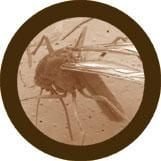Mosquito (Culex pipiens)
£8.95
Out of Stock
Our mosquito's itching to come over and play. She can be there by dusk.
Product Details
Additional Information
| Sizes | Giantmicrobes are based on actual microbes, cells, organisms and other critters, only 1,000,000 times actual size! Gigantic (GG) 40-60cm XL (XL) 25-38cm Original (PD) 12-20cm Minis (MM) 5-10cm each Keychain (KC) 5-10cm with clip |
|---|---|
| Materials | Plush from all new materials. Stuffed with polyester fiber fill. Surface washable: sponge with water & soap, air dry. |
| Packaging | Each plush microbe includes a printed card with fun, educational and fascinating facts about the actual microbe or cell. |
| Safety | Every product meets or exceeds U.S. and European standards for safety. For ages 3 and up. |
All about Mosquito (Culex pipiens)
| Description | Mosquitoes serve as a food source for fish, birds, and other insects, and act as pollinators for many plants. However, in the case for mosquito existence, most people will likely agree that the cons outweigh the pros. The problem with eradicating mosquitoes for good is that we don’t know everything there is to know about them yet. |
|---|
| Actual Size | Depending on the species, they can vary in size from 1.5 to 12.5 millimeters. Fossils of mosquitoes reveal that they used to live up to 2 inches. That’s almost the size of a credit card! |
|---|
| Where It Lives | There are thousands of mosquito varieties that exist all over the world. They grow just about anywhere there’s water and temperate climates. Some common genera of mosquitoes include Anopheles, Aedes, and Culex. Anopheles quadrimaculatus mosquitoes are known to carry and spread malaria. Aedes aegypti became infamous for spreading yellow fever. Culex pipiens is the common household mosquito found all over the U.S. All three of these mosquito species can carry West Nile Virus. |
|---|
| History | Mosquitoes evolved during the Jurassic period and have existed on Earth for over 175 million years. These little buggers outlived the dinosaurs! |
|---|
| Fascinating Facts | Only the females feed on blood from vertebrates. Males feed on plant juice and nectar. They have olfactive and thermic organs that detect carbon dioxide, warmth, and heat from their prey. They can sense their next meal from up to 50 meters. That’s half the size of a football field! |
|---|






